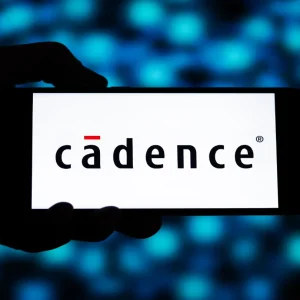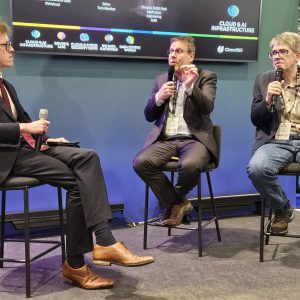
Bob Paul, Compuware CEO
In January this year application performance management [APM] company Compuware rejected an $11-a-share buyout offer by investor Elliott Management Corp. I caught up with Compuware’s CEO Bob Paul to discuss the latest developments, and find out how APM is progressing as a category.
Q. Long before the buyout offer you had really aligned what was a systems management company behind APM. What was your thinking behind that?
A. We already had a pretty good stake in the APM category, and we thought that it would grow even more as a category because the importance of applications is obviously rising very quickly due to the importance of reaching customers and consumers through web-based applications. We also saw that the complexity was going through the roof with the proliferation of mobile devices, public and private cloud, virtualisation – all that crazy stuff that’s going on. So the lack of visibility was very clear – so what an opportunity to change the game.
If it was now becoming a CEO problem, or a line of business or CIO problem, then someone who could solve it in a different way was really going to have an advantage. So that’s the path we went down, and why we made the acquisitions that we did.
But while that was going on, we had been aligning everything into business units more focused on the customer value. We’d gone from a $2.2bn company in the year 2000 to a $1bn company and what was left was these massive, monolithic back-office systems with heavy bureaucracy. So we set on the path to get the company even more focused and get the company more efficient. That’s where we had a six-month delay because of a governance-structure issue. Because we had that six month delay the activists said this is interesting: ‘here’s a company making a transformation but is not quite there – we can jump in here and take advantage of the rest of the work that has to get done’. That offer was put on the table but it had no financial backing and it was a non-binding offer. It was just basically a press release.
How did you deal with the offer from Elliott?
We took a different approach than BMC did. We brought them inside the tent and said ‘hey let us show you what we’re doing. We’re doing great things here. We’re leading the world in performance management, we’re going like gangbusters, we’ve got this wonderful Covisint asset where we’re going to unlock the value, etcetera’. The only thing we’ve not done, which they’d be interested in us doing, is replace a few of our board members, which is neither here nor there.
During this period have you had other offers?
We’ve had extensive interest but there’s nothing been put on the table that I believe our shareholders would accept, to date. There was a lot of talk around BMC because of the synergies that you would get from putting the two together, and the folks who now own BMC, the Bain guys, have got their hands full. This is third-hand information so I’m not sure how accurate it is but pretty reliable people said they missed their software licence number this past quarter by 45%. That’s massive.
One of things you said you needed to do was stabilise your mainframe business…
Investors talk about it as an anchor but what they don’t realise is it’s an extraordinarily healthy business that’s creating anywhere from 72 to 75% margins for us. Extraordinary amount of cash comes from that. So we’ve done quite a bit of investing. It’s a focus issue, and our ability to leverage performance management in the mainframe environment and have that single dashboard across the delivery chain – we’ve basically deployed Dynatrace inside the mainframe environment so I can now see from both a performance and cost basis the tremendous amount of intensive utilisation that’s being placed on the mainframe from web apps, cloud apps, that are still using the mainframe accessing databases and transaction processing.
We are the only company on the planet, in spite of the’ marketechture’ that other people come up with, where you can look at a single dashboard from an application perspective and then drill down, see it’s coming from a mainframe environment, here’s the actual program where it seems to be hung up, and then leverage our Strobe that actually gets to the DB2 call and the language inside the program that’s creating the 20 second response time.
Explain the Covisint spin-off? [Covisint is a Compuware division focused on cloud solutions, initially for the automotive industry]
On the bucket list of any CEO is to be on the stock exchange and ring the bell, and we did that about a month ago. We took 20% of Covisint public in a carve out. Inside a portfolio company you never get full value for the individual assets. Because we thought Covisint was special and could stand on its own, we thought that we could get much higher multiples, which proved to be true. To complete the unlocking of the value, in a five to eight month window, if you’re a shareholder of record of Compuware, you will get Covisint stock – so we’ll spin the remaining 80% back to Compuware shareholders.
The reason that private equity has had a little bit of a hard time getting to the number – the premium above our share price to buy Compuware – is because the Covisint valuation inside our company is a $400 to $500m company, but it’s got no EBITDA or operating positive cashflow to speak of, as are most high-growth, cloud-based companies. So they would have to pay for a $400m asset but they would have a five-year limit on when they can spin it back out so they’ve got to keep it for five years, meanwhile there’s no cash to speak of to pay off the debt that they put on the company when they bought it. So with Covisint spun out, it makes it a lot easier for private equity, in theory, to buy and take private Compuware.
Is that what you want to happen? A private equity acquisition?
There are pluses and some minuses. It really is irrelevant to me providing that we get the right valuation, which is a premium on the stock price. We’ve taken $45m of cost out, so we’re ahead of our plan. But that was the easy part. The low hanging fruit. We’ve got another $55m to take out that we’ve identified and that requires a fair amount of transformation of back-office IT systems. We’re well on the way to creating a very efficient back-office system [including Oracle R12, Salesforce.com and Marketo]. It takes tremendous costs out but also adds tremendous velocity around our business.
Do you see application performance management maturing as a category?
Absolutely. Because applications are becoming more important and the complexity is going way up, it creates a critical situation. We’re starting to see companies create either focused teams or people solely accountable for performance engineering or performance management. Directors, vice presidents of performance engineering. Teams of performance management engineers. And when they do that they’re trying to figure out how does this work inside my organisation to improve performance without slowing us down? What jurisdiction do we give it? How high up in the organisation does it go?
I can give you an example of a CIO in an billion-dollar insurance company, whose main theme coming into the organisation was performance management, and he made it a cultural issue, not just a tools issue, and he used performance management as a way to change his relationship and status within the business. Instead of just asking ‘how could I make your response time faster’, asking ‘what are you trying to accomplish? What is the business goal?’ And then I can design based on the goals and the impact on the business. They built a really trusted relationship with the business.






